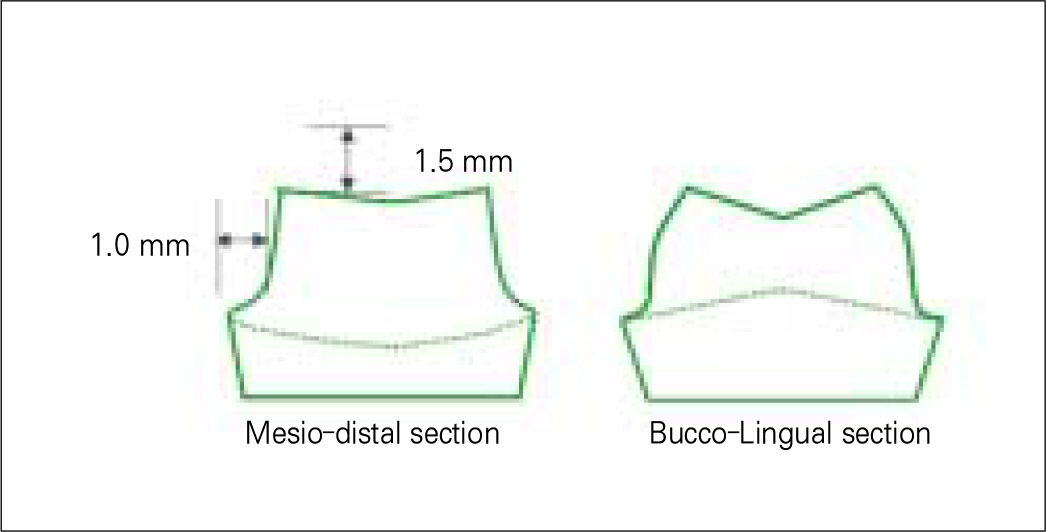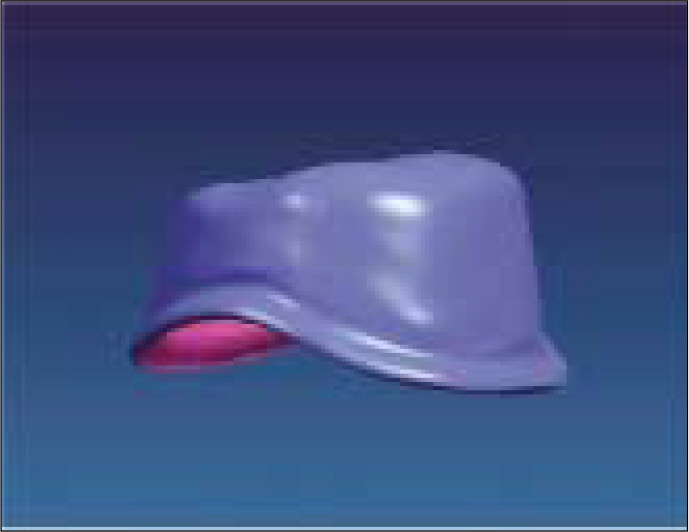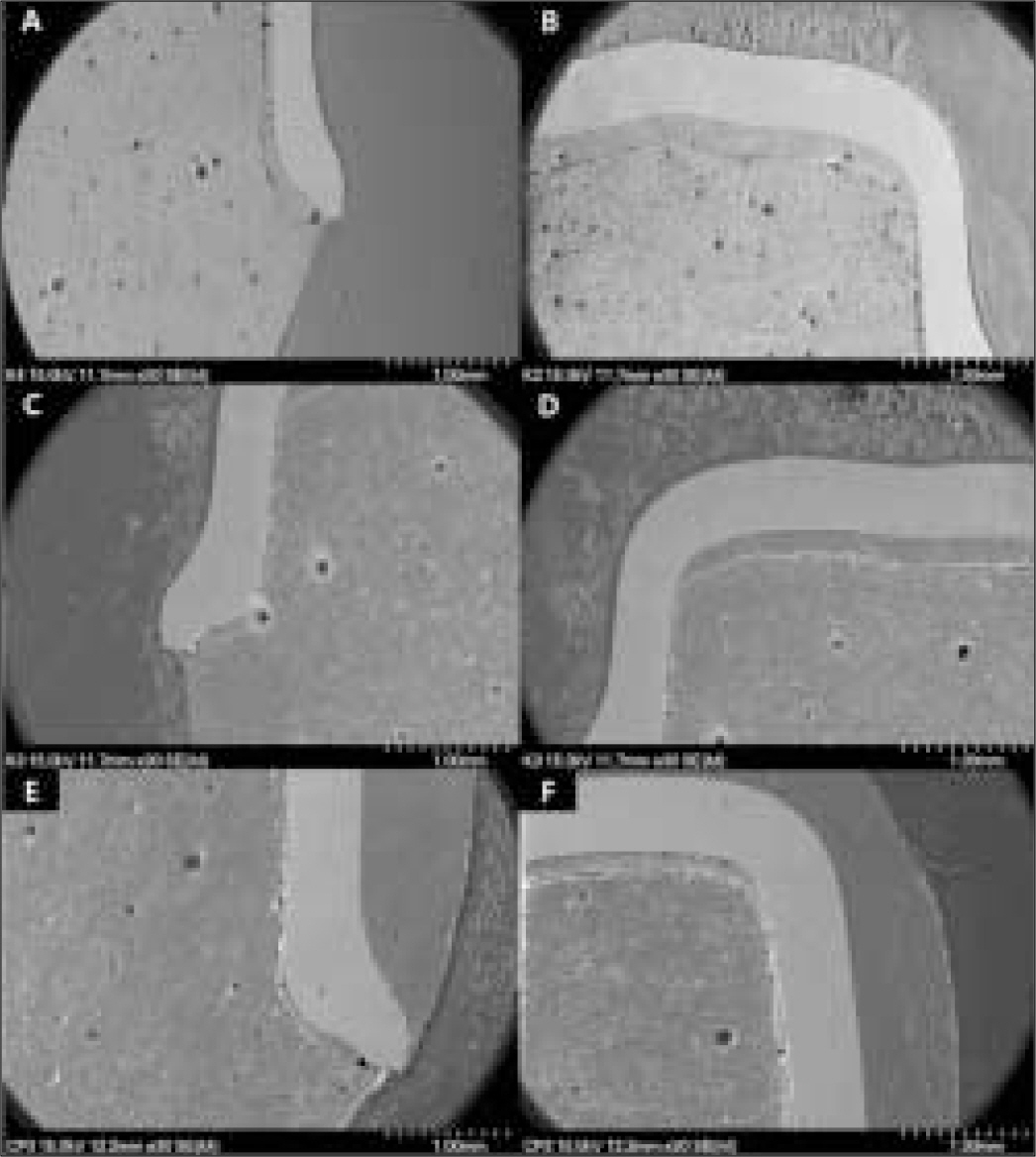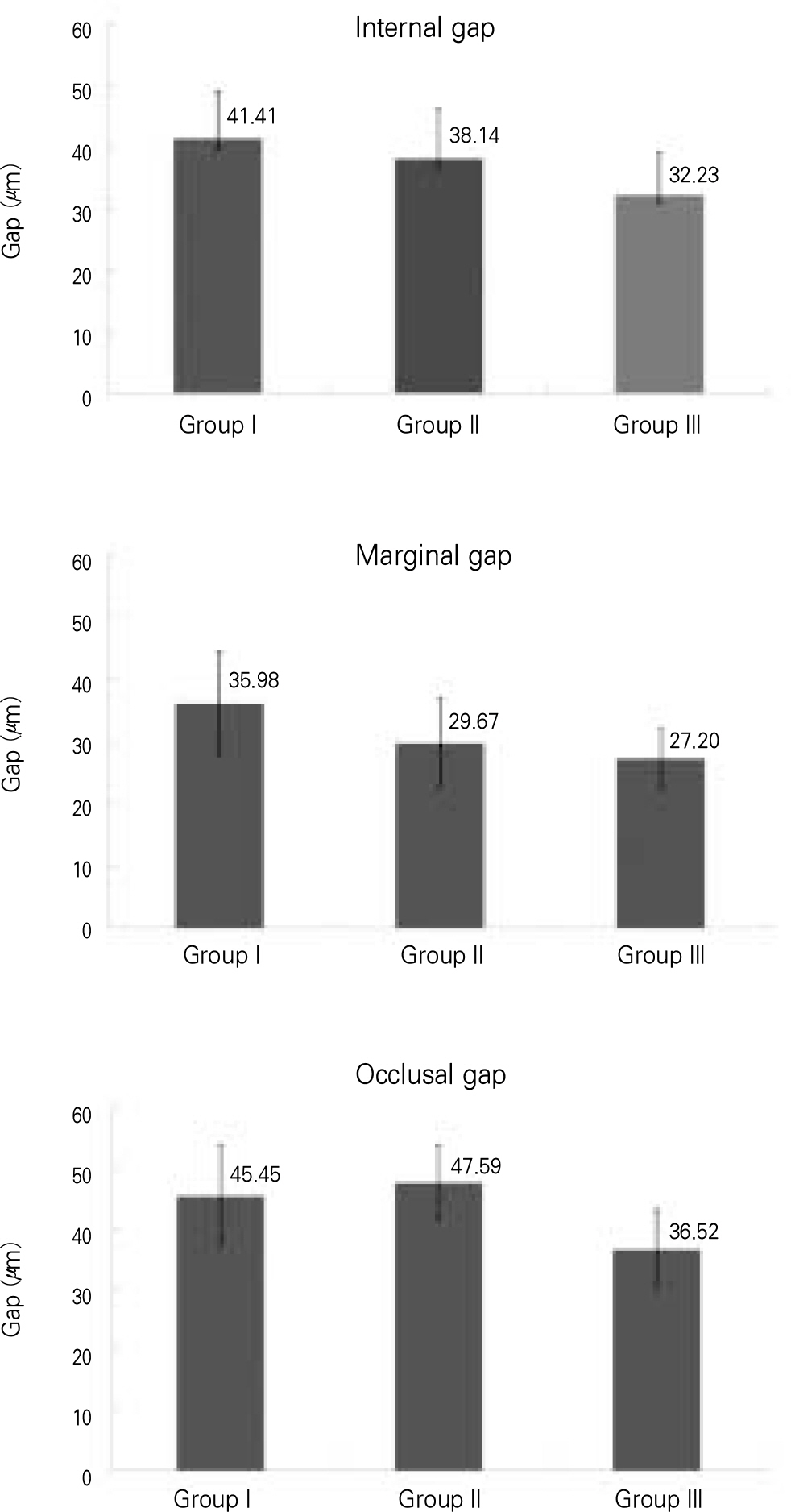J Korean Acad Prosthodont.
2010 Apr;48(2):143-150.
Adaptability of zirconia core fabricated by cold isostatic pressing
- Affiliations
-
- 1Department of Prosthodontics, School of Dentistry, Chonnam National University, Gwangju, Korea. psw320@chonnam.ac.kr
- 2Kuwotech Co. Ltd., Gwangju, Korea.
Abstract
- PURPOSE
The purpose of this study is to fabricate the new zirconia block (CNU block) and to evaluate fit of core and porcelain veneered zirconia crown. MATERIAL AND METHODS: The experimental blocks were fabricated from the commercial ytrria-stabilized zirconia powder (KZ-3YE Type A). The powder was uniaxial pressing and the green bodies were conducted using the Cold Isostatic Pressing. The zirconia blocks were presintered at 1040degrees C and the final sintering was performed at 1450degrees C. The Kavo Everest ZS blank(R) (KaVo, Biberach/Ri beta.) was used as a control group. The linear shrinkage of CNU block and Kavo block were compared. Twenty-one cores for porcelain veneered crowns were fabricated with CAD/CAM system (Everest(R), Biberach/Ribeta.). Group I: seven cores fabricated from Kavo blocks, Group II: seven cores fabricated from CNU blocks, Group III: seven cores from CNU blocks and porcelain veneering for crowns. All specimens were cemented and sectioned into two planes: diagonal and bucco-lingual. The measurement of the marginal, internal, and occlusal fit was carried out using SEM (S-4800(R)) at 30 x. The results were analyzed by one-way ANOVA test.
RESULTS
The linear shrinkage of the CNU block and the KaVo block was 19.00% and 20.09%. The marginal gap of cores (29.67 +/- 6.58 micrometer) fabricated from CNU blocks showed significantly smaller than that of the cores of Kavo blocks (36.84 +/- 7.18 micrometer) (P < .05). The internal gaps of the porcelain veneered crowns (32.23 +/- 6.33 micrometer) were larger than those of the other two groups (37.57 +/- 6.81 micrometer and 38.14 +/- 6.81 micrometer).
CONCLUSION
No statistically significant difference was found in between experimental groups and control group. The experimental groups in marginal gap showed significantly smaller than the control group.
Keyword
MeSH Terms
Figure
Reference
-
1.Seghi RR. Relative flexural strength of six new ceramic materials. Int J Prosthodont. 1995. 8:239–46.2.Tinschert J., Mautsch W., Spickermann H., Anusavice KJ. Marginal fit of alumina-and zirconia-based fixed partial dentures produced by a CAD/CAM system. Oper Dent. 2001. 26:367–74.3.Sturdevant JR., Heymann HO. Margin gap size of ceramic inlays using second-generation CAD/CAM equipment. J Esthet Dent. 1999. 11:206–14.
Article4.Besimo C., Guggenheim R. Marginal adaptation of titnium fram-works produced by Cad/Cam techniques. Int J Prosthodont. 1997. 10:541–6.5.Shimizu K., Kumar P., Kotoura Y., Yamamoto T., Makinouchi K. Time-dependent changes in the mechenical Properties of zirconia ceramic. J Biomed Mater Res. 1993. 27:729–34.6.Luthardt RG., Sandkuhl O., Herold V., Schnapp JD., Kuhlisch E. Reliability and properties of ground Y-TZP-zirconia ceramics. J Dent Res. 2002. 81:487–91.7.Wagner WC. Biaxial flexural strength and indentation fracture toughness of three new dental core ceramics. J Prosthet Dent. 1996. 76:140–4.
Article8.Meyenberg KH., Scharer P. Zirconia Posts: A new all-ceramic concept for nonvital abutment teeth. J Esthet Dent. 1995. 7:73–80.
Article9.Donachie MJ. Effects of Pressing on metal powders. J Metals. 1963. 9:849–54.
Article10.Moon IH. Relationship between compacting pressure, green density and green strength of copper powder compacts. Powder Metallurgy. 1984. 27:80–4.
Article11.James PJ. Particles deformation during coldisostatic pressing of metal powders. Powder Metallurgy. 1977. 20:199–204.12.Chantikul P., Anstis GR., Lawn BR., Marshall DB. A critical evaluation of indentation techniques for measuring fracture toughness: II, Strength method. J Am Ceram Soc. 1981. 64:539–43.
Article13.Shin HS., Kim SG. Comparison of marginal fit before and after porcelain build-up of two kinds of CAD/CAM zirconia all-ceramic restorations. J Korean Acad Prosthodontics. 2008. 46:528–34.
Article14.Sun WS. How about CIP. J Ponderous. 1993. 9:258–68.15.Sorensen JA. A standardized method for determination of crown margin. J Prosthet Dent. 1990. 64:18–24.16.Kay GM., Dongon IL. Factors affecting the seating and fit of complete crowns: A computer simulation study. J Prosthet Dent. 1986. 55:13–8.
Article17.Holmes JR., Holland GA., Sulik WD. Considerations in measurement of marginal fit. J Prosthet Dent. 1989. 62:405–8.
Article18.Valderrama S., Gooacre CJ., Munoz CA. A comparison of the marginal and internal adaptation of titanium and gold-platinum-palladium metal ceramic crowns. Int J Prosthodont. 1995. 8:29–37.19.Wang CJ., Nathanson DN. Effects of cement, cement space, marginal design, seating aid materials, and seating force on crown cementation. J Prosthet Dent. 1992. 67:786–90.
Article20.Cristensen GJ. Marginal Fit of Gold Casting. J Prosthet Dent. 1966. 16:297–305.21.May KB., Russell MM., Razzoog ME., Lang BR. Precision of fit: The Procera Allceram crown. J Prosthet Dent. 1998. 80:394–404.
Article22.Tinschert J., Natt G. Mautsch W SH, Anusavice KJ. Marginal fit of alumina-and zirconia-based fixed partial dentures produced by a CAD/CAM system. Oper Dent. 2001. 26:367–74.23.Kim DK., Lim JH., Lim HS. On The marginal fidelity of all-ceramic core using CAD/CAM system. J Korean Acad Prosthodont. 2003. 41:20–34.24.Palomo F., Peden J. Periodontal consideration of restorative procedure. J Prosthet Dent. 1976. 36:387–94.
- Full Text Links
- Actions
-
Cited
- CITED
-
- Close
- Share
- Similar articles
-
- Comparative study in marginal adaptation of zirconia cores fabricated with 3 different CAD/CAM systems
- A study on the shear bond strengths of veneering ceramics to the colored zirconia core
- The fit of zirconia core fabricated with CAD/CAM system
- Evaluation of the fracture resistance of all-ceramic zirconia posts by 3 different methods
- Spectrophotometric analysis of the influence of zirconia core on the color of ceramic








